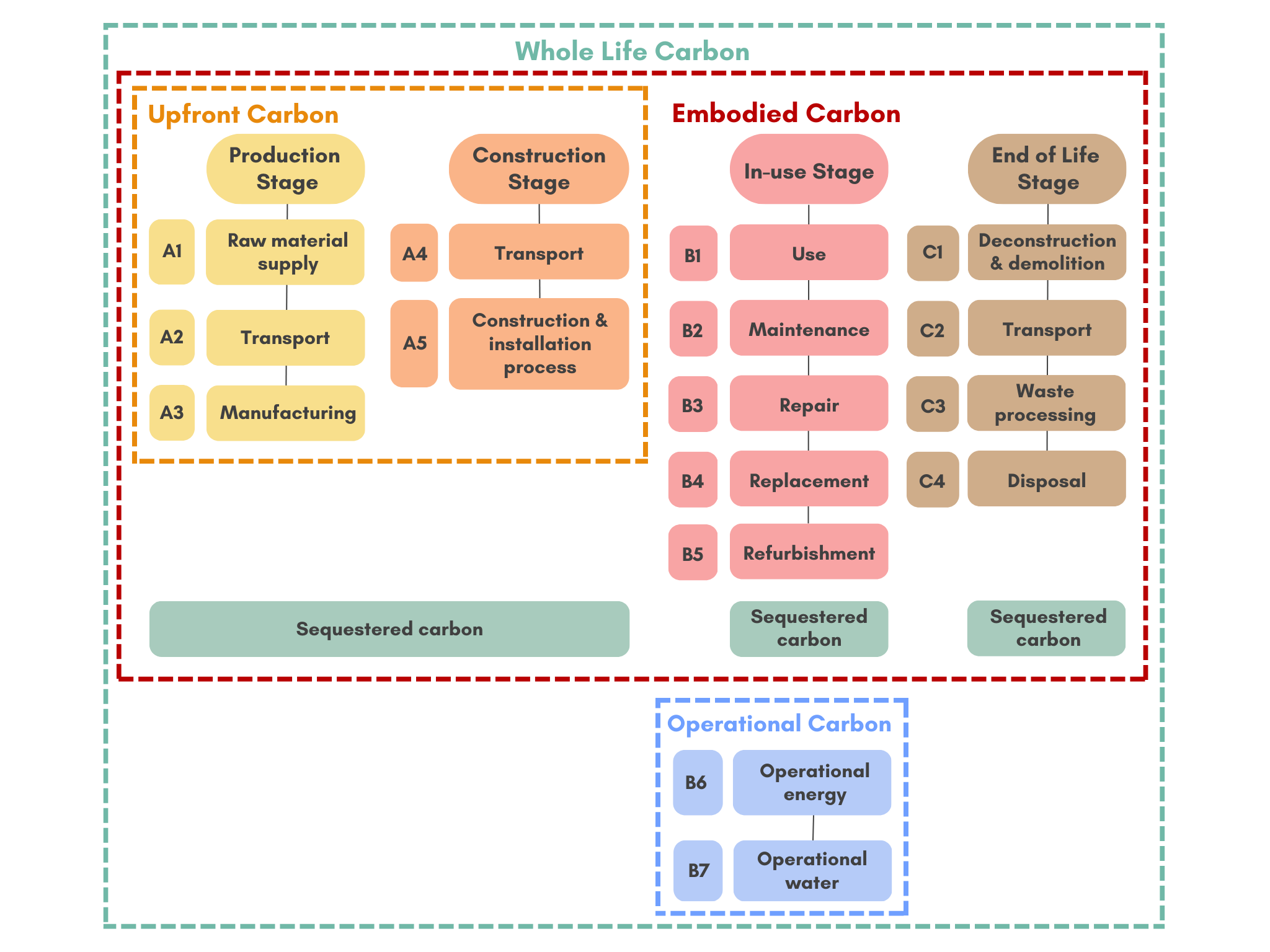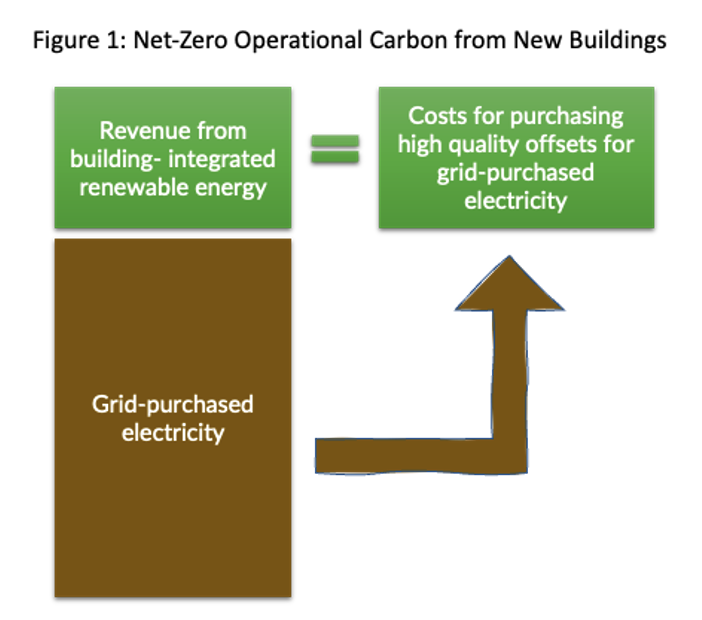Net-Zero Carbon Considerations for Capital Projects
HKUST has adopted a goal of achieving a balance between the amount of greenhouse gas emissions released and an equal volume of emissions removed from the atmosphere. The target date for reaching this “net-zero” state of balance is 2041. Since removing carbon from the atmosphere is challenging and costly, HKUST’s strategy is to invest in the reduction of greenhouse gas emissions in all capital projects so that both embodied carbon and emissions from future operations are brought to zero, or as close as possible.

Embodied Carbon: All emissions from capital projects will be included in the university’s carbon footprint starting in the academic year 2023-24. Recognizing the limited nature of Life Cycle Assessment (LCA) databases and available information on building supplies, embodied carbon will be calculated by including the following elements:
- 2023-2030 Core building and shell (superstructure, glazing, cladding, and wiring)
- 2031-2035 Core building and shell, plus MEC equipment, selected finishes
- 2035 onward All building elements, including interior and exterior furnishing
Approach for embodied carbon: To reach net-zero carbon emissions, all embodied carbon from the construction process must be offset using high quality, long-term removal offsets based on the Oxford Offsetting Principles. The estimated costs for offsets will be calculated based on a HKUST cost model, and the costs will be reserved as a line item in the capital budget. This provides an economic incentive for design teams to reduce embodied carbon as much as possible in order to free capital funds for other design considerations.
Approach for operational carbon: Recognizing that building-integrated renewable energy resources provide both (1) low carbon electricity, and (2) revenue from feed-in-tariffs or avoided utility costs, the net-zero carbon design approach is to increase the amount of building integrated renewable resources to the point at which the revenue balances the costs of purchasing high quality offsets for the remaining emissions. Costs will be based on the HKUST cost model that takes into account the utility grid CO2 coefficient and estimated costs of offsets over time.

Life Cycle Analysis: HKUST has adopted a life cycle approach to analyzing the long-term costs and benefits of capital project decision-making. Assessing the embodied carbon relies on life cycle analysis to determine the overall climate impacts of building materials. HKUST uses One-Click LCA and the HK Construction Industry Council
Life Cycle Costing: Defined as Compilation and assessment of all costs related to a product, over its entire life cycle, from production to use, maintenance and disposal, HKUST recognizes LCCA as an essential tool for evaluating how design decisions impact the university over time. HKUST requires all design options to include both capital costs and the life cycle costs.
Refer to our Net-Zero Building Standards for more information.
Impact of Green Materials on Embodied Carbon - The Case of Martin Ka Shing Lee Innovation Building

Using Martin Ka Shing Lee Innovation Building design stage data, sensitivity analysis of the impact of green rebars and concrete was studied.
- Embodied carbon reduction for green rebar alone (compared to baseline building that does not adopt green concrete and rebar): 44%
- Embodied carbon reduction for PFA concrete alone (compared to baseline building with green rebar): Additional 10% reduction
- Embodied carbon reduction for 35% PFA concrete alone (compared to baseline building with green rebar): Additional 12% reduction
- Embodied carbon reduction for 70% GGBS concrete alone (compared to baseline building with green rebar): Additional 23% reduction
Green Reinforcement Steel Bars - Hong Kong Market
At present, Hong Kong suppliers include Shiu Wing Steel and Welmetal Steel, with some listed on the CIC Green Product Certification database.
EPD database maintained by China Iron and Steel Association attempts to adopt a common approach to GHG measurement and classification after recently reaching an agreement with Responsible Steel. Hong Kong contractors may source directly from China steel manufacturers or through a middle man depending on procurement requirements.
The various source of recycled steel will be factored into the embodied carbon of the raw material acquisition, production and transportation to Hong Kong. This will be reflected in the carbon emission factor on the CIC green product certificate or the Environmental Product Declaration certificate.
Green Concrete - Hong Kong Market
Cement typically contributes to over 80% of embodied carbon in Concrete. In Hong Kong, local suppliers of green concrete include Gammon and Alliance. Available green concrete (replacing normal Portland cerment) listed on the CIC Green Product Certication database varies from PFA, 35% PFA replacement, 35% GGBS, 70% GGBS, and Carbon Cure (with carbon capture) depending on the concrete strength. Building Department limits cement replacement to 35% PFA and 75% GGBS to preserve structural integrity.
Cement replacement using GGBS has been found to be effective in reducing embodied carbon. Based on a MTR study, high percentage of GGBS are recommended for structures with less concern on early strength, cast in warm / hot temperature, with higher concern on durability and water proofing.
However, other project teams we have interviewed did not experience the same concerns in their application of the design mix, admixture use and structural requirements.
It is interesting to note that GGBS concrete is currently specified for government projects which is likely to drive the supply for GGBS in Hong Kong in the longer term.